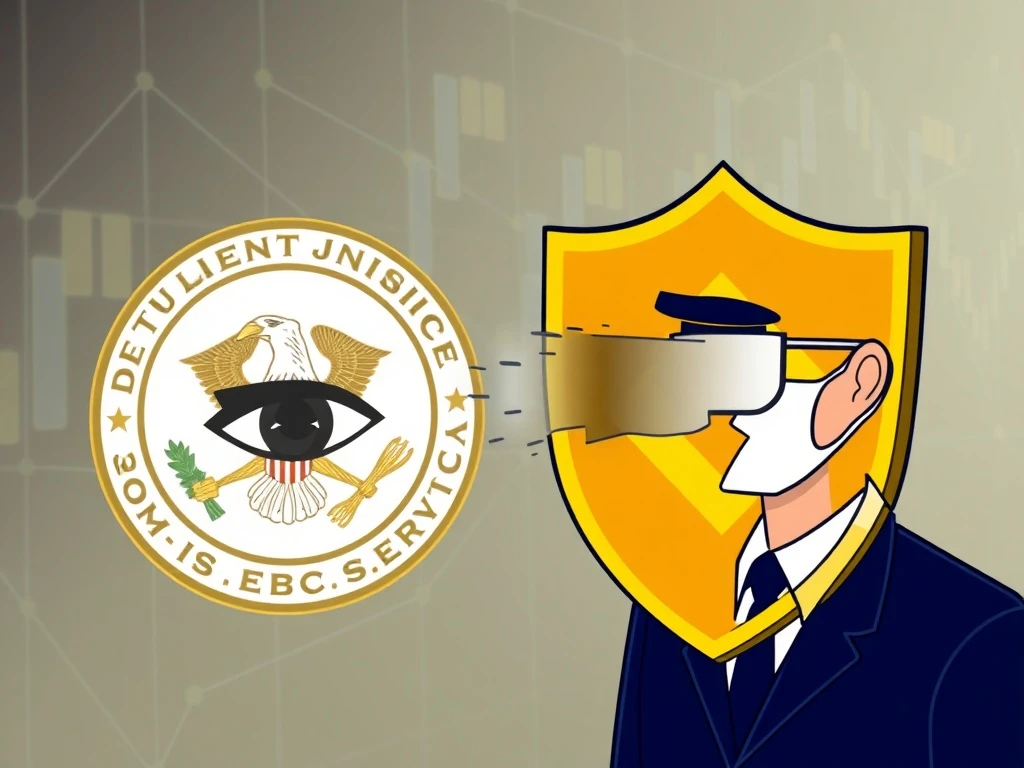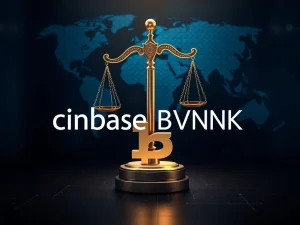Binance Eyes Pivotal DOJ Deal: Early End to Compliance Monitor Signals New Era for Crypto Regulation

The cryptocurrency world watches closely. Binance, the world’s largest crypto exchange, is reportedly negotiating with the U.S. Department of Justice (DOJ). These talks aim to lift a crucial oversight measure: the independent compliance monitor. This potential regulatory easing could significantly alter Binance’s operational landscape. Furthermore, it signals a broader shift in crypto regulation.
Binance DOJ Deal: A New Chapter in Compliance
Recent reports suggest Binance is actively discussing an early end to its mandated compliance oversight. Bloomberg, citing sources familiar with the matter, indicates the DOJ is weighing this possibility. The compliance monitor was a central component of a substantial $4.3 billion DOJ settlement reached in 2023. This agreement addressed allegations of severe compliance failures, notably insufficient anti-money laundering (AML) safeguards. An early termination of this oversight would mark a pivotal moment for the exchange. It could reduce operational burdens and foster greater agility.
The 2023 DOJ settlement specifically applied to Binance’s global operations. Its U.S. counterpart, Binance.US, functions as a distinct legal entity. Therefore, this potential change primarily impacts the international platform. Such a development would not only benefit Binance but also send a strong message across the digital asset industry. It hints at a maturing approach to enforcement and compliance within the sector.
Understanding the DOJ Settlement and its Compliance Mandate
The DOJ settlement against Binance was one of the largest corporate resolutions in history. It underscored the U.S. government’s firm stance on financial integrity within the crypto space. As part of this agreement, an independent compliance monitor was installed. This monitor’s role was to oversee Binance’s adherence to stringent new compliance protocols. It aimed to prevent future illicit activities.
The mandate initially set a three-year term for this oversight. The monitor’s tasks included:
- Reviewing internal controls and policies.
- Assessing transaction monitoring systems.
- Reporting findings directly to the DOJ.
Companies often view such external oversight as costly and disruptive. It demands significant resources and can slow down innovation. Consequently, an early exit from this arrangement would offer Binance substantial relief. It would allow the company to manage its compliance internally, potentially streamlining operations.
The Compliance Monitor: Role, Costs, and Potential Removal
A compliance monitor serves as an external watchdog. This individual or team ensures a company upholds its legal and ethical obligations following a settlement. For Binance, this meant a deep dive into its global operations. The monitor focused on enhancing AML and Know Your Customer (KYC) procedures. While crucial for accountability, these monitors come with significant financial and operational costs. Companies bear the expense of the monitor’s team, their travel, and their extensive review processes.
Therefore, the prospect of removing the compliance monitor early is highly appealing to Binance. It signifies a potential acknowledgment by the DOJ of Binance’s progress. It suggests the exchange may have sufficiently implemented the required compliance frameworks ahead of schedule. This move could also set a precedent for other firms facing similar post-settlement oversight. It might offer a pathway for demonstrating compliance and regaining full operational autonomy sooner.
Broader Trends in Regulatory Easing and Corporate Oversight
Bloomberg’s report also points to a wider trend within the DOJ. The department appears to be exploring ways to reduce or end external oversight in certain cases. This shift reflects a potential re-evaluation of the long-term efficacy and burden of such monitors. For example, at least three other major companies have successfully avoided extended compliance oversight:
- Glencore Plc: A mining giant.
- NatWest Group Plc: A UK-based banking institution.
- Austal Ltd.: An Australian naval shipbuilding company.
These instances suggest a move towards greater flexibility in corporate enforcement. This potential regulatory easing aligns with broader discussions about corporate accountability. It balances punitive measures with incentives for genuine reform. For the crypto industry, this trend is particularly relevant. It could indicate a more nuanced approach to enforcing regulations against digital asset firms. This is a positive sign for market participants.
US Crypto Regulation at a Crossroads: A Pro-Industry Shift
Binance‘s reported bid for eased compliance obligations arrives during a notable shift in the U.S. regulatory landscape. The crypto industry is increasingly embracing clearer, more industry-friendly regulation. This is especially true under the current administration. For instance, several key initiatives have advanced:
- The signing of the GENIUS stablecoin act.
- The House of Representatives’ passage of a market-structure bill.
- New anti-CBDC legislation.
Regulators are also clarifying their stances on digital assets. Securities and Exchange Commission (SEC) Chair Paul Atkins recently pledged an end to “regulation through enforcement.” He promised clearer guidance on issues like tokenization. The SEC has since clarified its position on liquid staking tokens. It determined they largely fall outside securities legislation. Both the SEC and the Commodity Futures Trading Commission (CFTC) are aligning with the administration’s digital-economy framework. This includes a recent CFTC announcement creating a pathway for foreign crypto exchanges to serve select U.S. clients. These collective efforts signal a significant push towards regulatory easing. They aim to foster innovation while maintaining market integrity. This evolving environment offers hope for more predictable and supportive frameworks for digital assets.
Future Outlook: What This Means for Binance and the Industry
An early termination of the compliance monitor would be a major win for Binance. It would reduce overheads and potentially enhance its reputation. It signals a successful remediation of past issues. Furthermore, it could allow Binance to reallocate resources towards innovation and growth. For the broader crypto industry, this development is equally significant. It sets a precedent for how major regulatory bodies, like the DOJ, might approach post-settlement oversight. It reinforces the idea that demonstrating robust compliance can lead to earlier autonomy.
This potential regulatory easing underscores a maturing relationship between traditional financial enforcement and the rapidly evolving digital asset sector. It suggests that regulators are willing to adapt their strategies. They aim to balance oversight with industry development. The ongoing discussions between Binance and the DOJ are therefore crucial. They will shape not only Binance’s future but also the trajectory of crypto regulation for years to come. Market participants will watch closely for official confirmation and further details.







